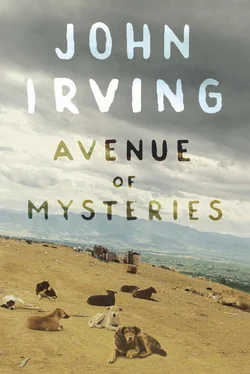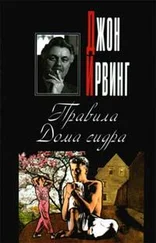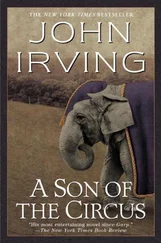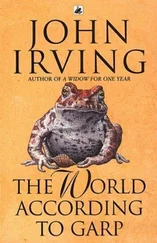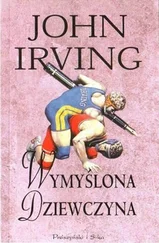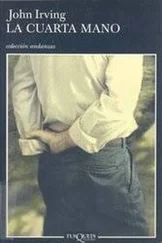John Irving
Avenue of Mysteries
For Martin Bell and
Mary Ellen Mark.
What we began together,
let us finish together.
Also for Minnie Domingo and
Rick Dancel, and their
daughter, Nicole Dancel,
for showing me the Philippines.
And for my son Everett,
my interpreter in Mexico,
and Karina Juárez,
our guide in Oaxaca
— dos abrazos muy fuertes.
Journeys end in lovers meeting.
— WILLIAM SHAKESPEARE, Twelfth Night
Occasionally, Juan Diego would make a point of saying, “I’m a Mexican — I was born in Mexico, I grew up there.” More recently, he was in the habit of saying, “I’m an American — I’ve lived in the United States for forty years.” Or, in an effort to defuse the nationality issue, Juan Diego liked to say, “I’m a midwesterner — in fact, I’m an Iowan.”
He never said he was a Mexican American. It wasn’t only that Juan Diego disliked the label, though he thought of it as such and he did dislike it. What Juan Diego believed was that people were always seeking a commonality with the Mexican-American experience, and he could find no common ground in his own experience; more truthfully, he didn’t look for it.
What Juan Diego said was that he’d had two lives — two separate and distinctly different lives. The Mexican experience was his first life, his childhood and early adolescence. After he left Mexico — he’d never gone back — he had a second life, the American or midwestern experience. (Or was he also saying that, relatively speaking, not a whole lot had happened to him in his second life?)
What Juan Diego always maintained was that, in his mind — in his memories, certainly, but also in his dreams — he lived and relived his two lives on “parallel tracks.”
A dear friend of Juan Diego’s — she was also his doctor — teased him about the so-called parallel tracks. She told him he was either a kid from Mexico or a grown-up from Iowa all the time. Juan Diego could be an argumentative person, but he agreed with her about that.
BEFORE THE BETA-BLOCKERS HAD disturbed his dreams, Juan Diego told his doctor friend that he used to wake up to the “gentlest” of his recurrent nightmares. The nightmare he had in mind was really a memory of the formative morning he became a cripple. In truth, only the beginning of the nightmare or the memory was gentle, and the origin of this episode was something that happened in Oaxaca, Mexico — in the neighborhood of the city dump, in 1970—when Juan Diego was fourteen.
In Oaxaca, he was what they called a dump kid (un niño de la basura); he lived in a shack in Guerrero, the colony for families who worked in the dump (el basurero). In 1970, there were only ten families living in Guerrero. At that time, about a hundred thousand people lived in the city of Oaxaca; many of them didn’t know that the dump kids did most of the picking and sorting through stuff at the basurero. The children had the job of separating the glass, aluminum, and copper.
People who knew what the dump kids did called them los pepenadores—“the scavengers.” At fourteen, that was who Juan Diego was: a dump kid and a scavenger. But the boy was also a reader; the word got around that un niño de la basura had taught himself to read. Dump kids weren’t the biggest readers, as a rule, and young readers of any origin or background are rarely self-taught. That was why the word got around, and how the Jesuits, who put such a high priority on education, heard about the boy from Guerrero. The two old Jesuit priests at the Temple of the Society of Jesus referred to Juan Diego as the “dump reader.”
“Someone should bring the dump reader a good book or two — God knows what the boy finds to read in the basurero!” either Father Alfonso or Father Octavio said. Whenever one of these two old priests said “someone should” do anything, Brother Pepe was always the one who did it. And Pepe was a big reader.
In the first place, Brother Pepe had a car, and, because he’d come from Mexico City, getting around Oaxaca was relatively easy for him. Pepe was a teacher at the Jesuit school; it had long been a successful school — everyone knew the Society of Jesus was good at running schools. On the other hand, the Jesuit orphanage was relatively new (it had been less than ten years since they’d remodeled the former convent as an orphanage), and not everyone was crazy about the orphanage’s name — to some, Hogar de los Niños Perdidos was a long name that sounded a little severe.
But Brother Pepe had put his heart into the school and the orphanage; over time, most of those tender souls who objected to the sound of “Home of the Lost Children” would certainly admit that the Jesuits ran a pretty good orphanage, too. Besides, everyone had already shortened the name of the place—“Lost Children,” people called it. One of the nuns who looked after the children was more blunt about it; to be fair, Sister Gloria must have been referring to a couple of misbehaving kids, not to all the orphans, when she muttered, occasionally, “los perdidos”—surely “the lost ones” was a name the old nun intended for only a few of the more exasperating children.
Luckily, it was not Sister Gloria who brought the books to the basurero for the young dump reader; if Gloria had chosen the books and been their deliverer, Juan Diego’s story might have ended before it began. But Brother Pepe put reading on a pedestal; he was a Jesuit because the Jesuits had made him a reader and introduced him to Jesus, not necessarily in that order. It was best not to ask Pepe if reading or Jesus had saved him, or which one had saved him more.
At forty-five, he was too fat — a “cherubic-looking figure, if not a celestial being,” was how Brother Pepe described himself.
Pepe was the epitome of goodness. He embodied that mantra from Saint Teresa of Ávila: “From silly devotions and sour-faced saints, good Lord, deliver us.” He made her holy utterance foremost among his daily prayers. No wonder children loved him.
But Brother Pepe had never been to the Oaxaca basurero before. In those days, they burned everything they could in the dump; there were fires everywhere. (Books were useful fire starters.) When Pepe stepped out of his VW Beetle, the smell of the basurero and the heat of the fires were what he’d imagined Hell would be like — only he hadn’t imagined children working there.
There were some very good books in the backseat of the little Volkswagen; good books were the best protection from evil that Pepe had actually held in his hands — you could not hold faith in Jesus in your hands, not in quite the same way you could hold good books.
“I’m looking for the reader,” Pepe told the dump workers, both the adults and the children. Los pepenadores, the scavengers, gave Pepe a look full of contempt. It was evident that they did not value reading. One of the adults spoke first — a woman, perhaps Pepe’s age or a little younger, probably the mother of one or more of the scavengers. She told Pepe to look for Juan Diego in Guerrero — in el jefe’s shack.
Brother Pepe was confused; maybe he’d misunderstood her. El jefe was the dump boss — he was the head of the basurero. Was the reader el jefe’s child? Pepe asked the woman worker.
Several dump kids laughed; then they turned away. The adults didn’t think it was funny, and the woman said only: “Not exactly.” She pointed in the direction of Guerrero, which was nestled into a hillside below the basurero. The shacks in the colony had been assembled from materials the workers had found in the dump, and el jefe’s shack was the one at the periphery of the colony — at the edge nearest to the dump.
Читать дальше
